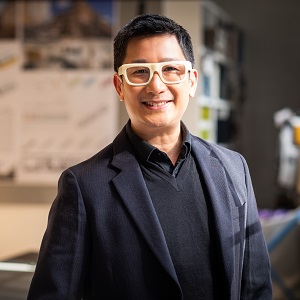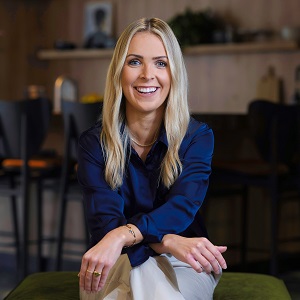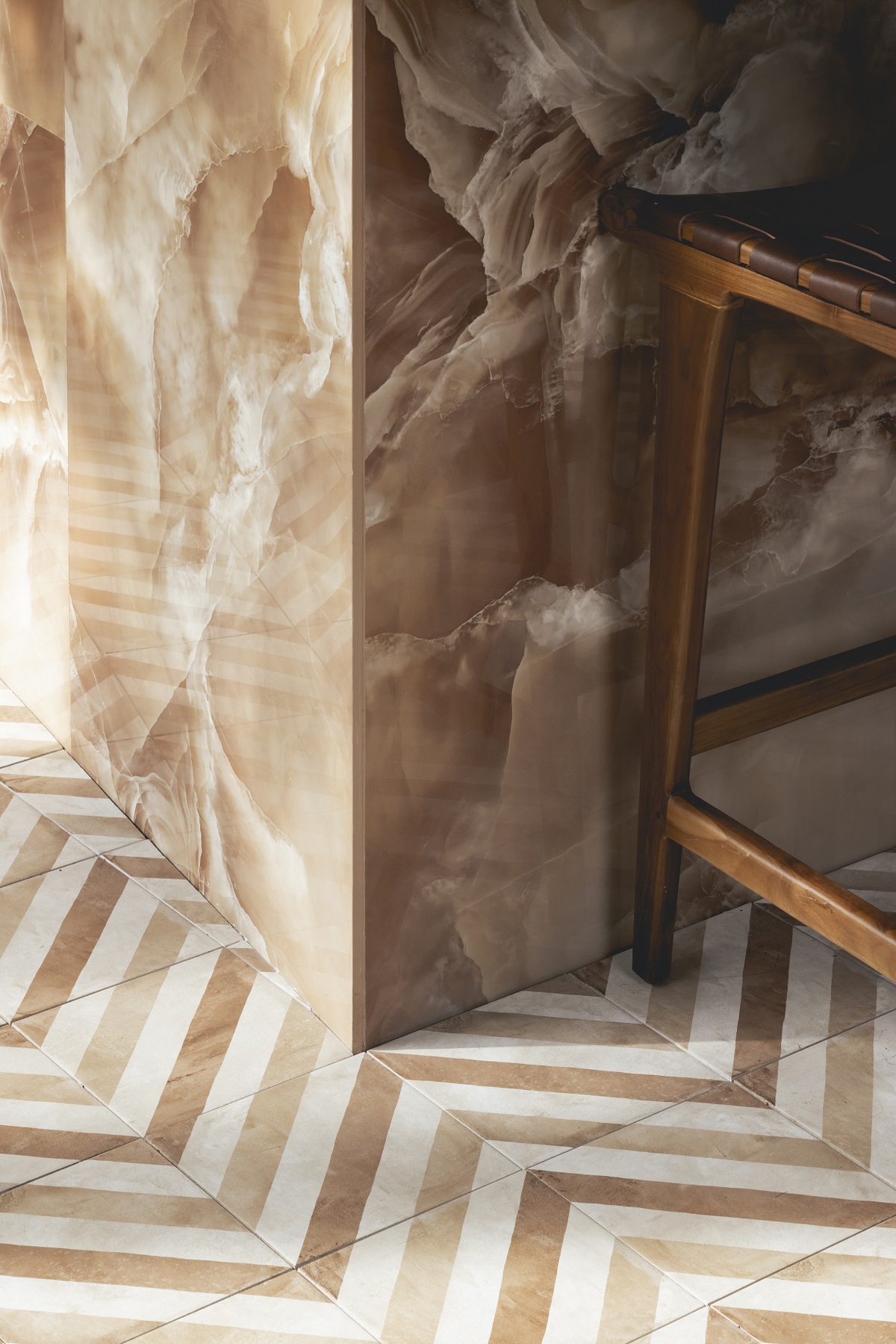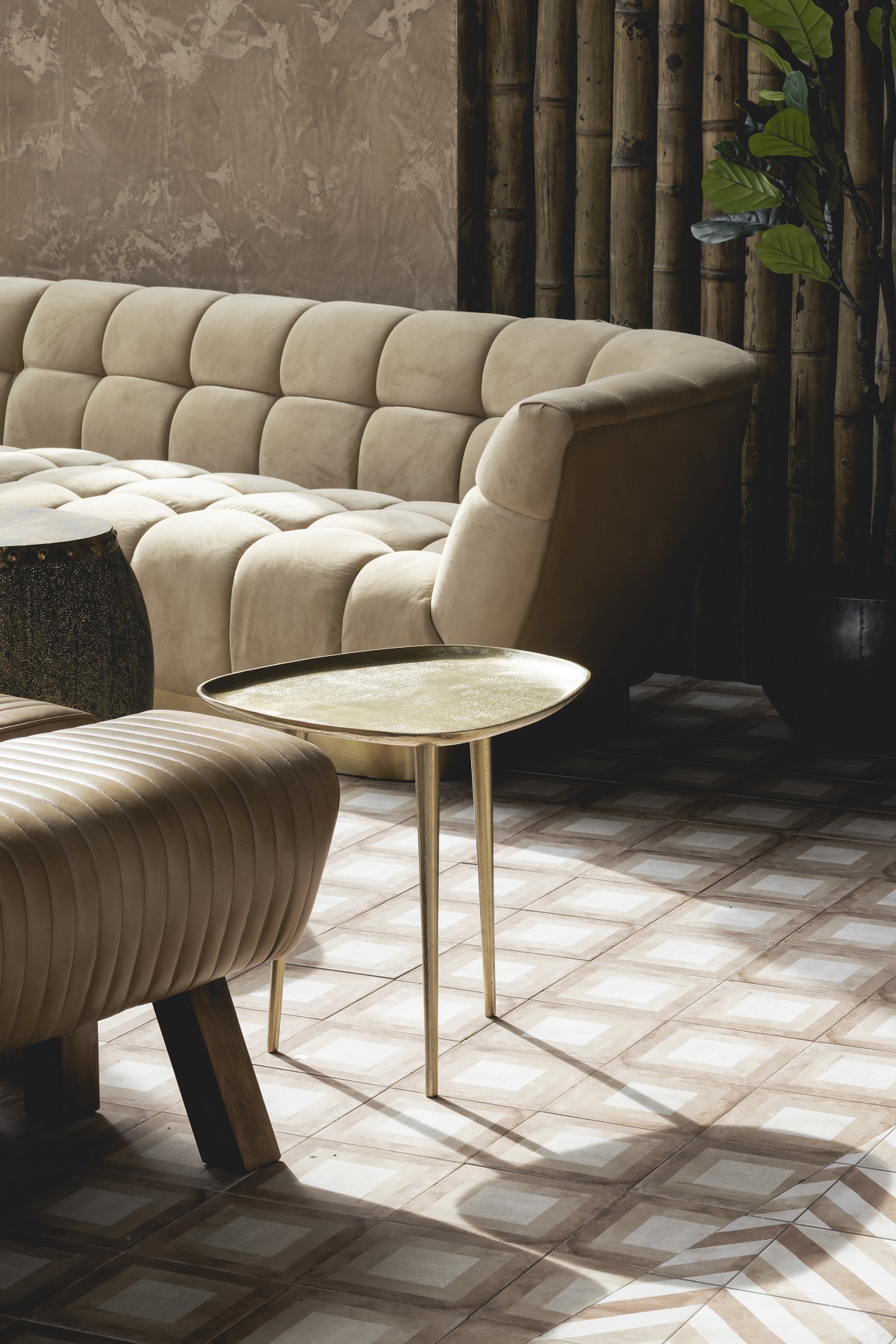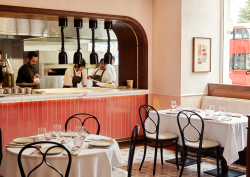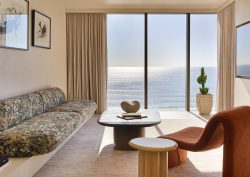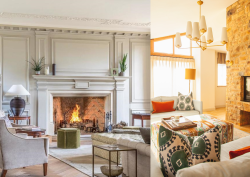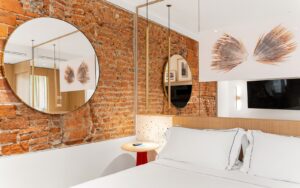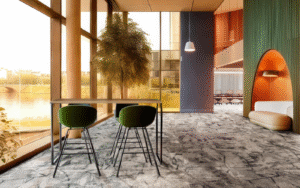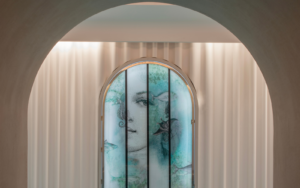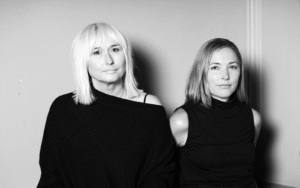Exploring biophilic design on all sensory levels, a journey that inevitably merges with questions of nature and sustainability, was the question on the table inside the Atlas Concorde showroom during Clerkenwell Design Week 2023. Surrounded by materials clearly referencing natural surfaces both in colour and texture, Editor Hamish Kilburn sat down with seven leading designers to discuss the path hotel design, in particular, is taking when it comes to injecting natural elements into surface design. Pauline Brettell writes…
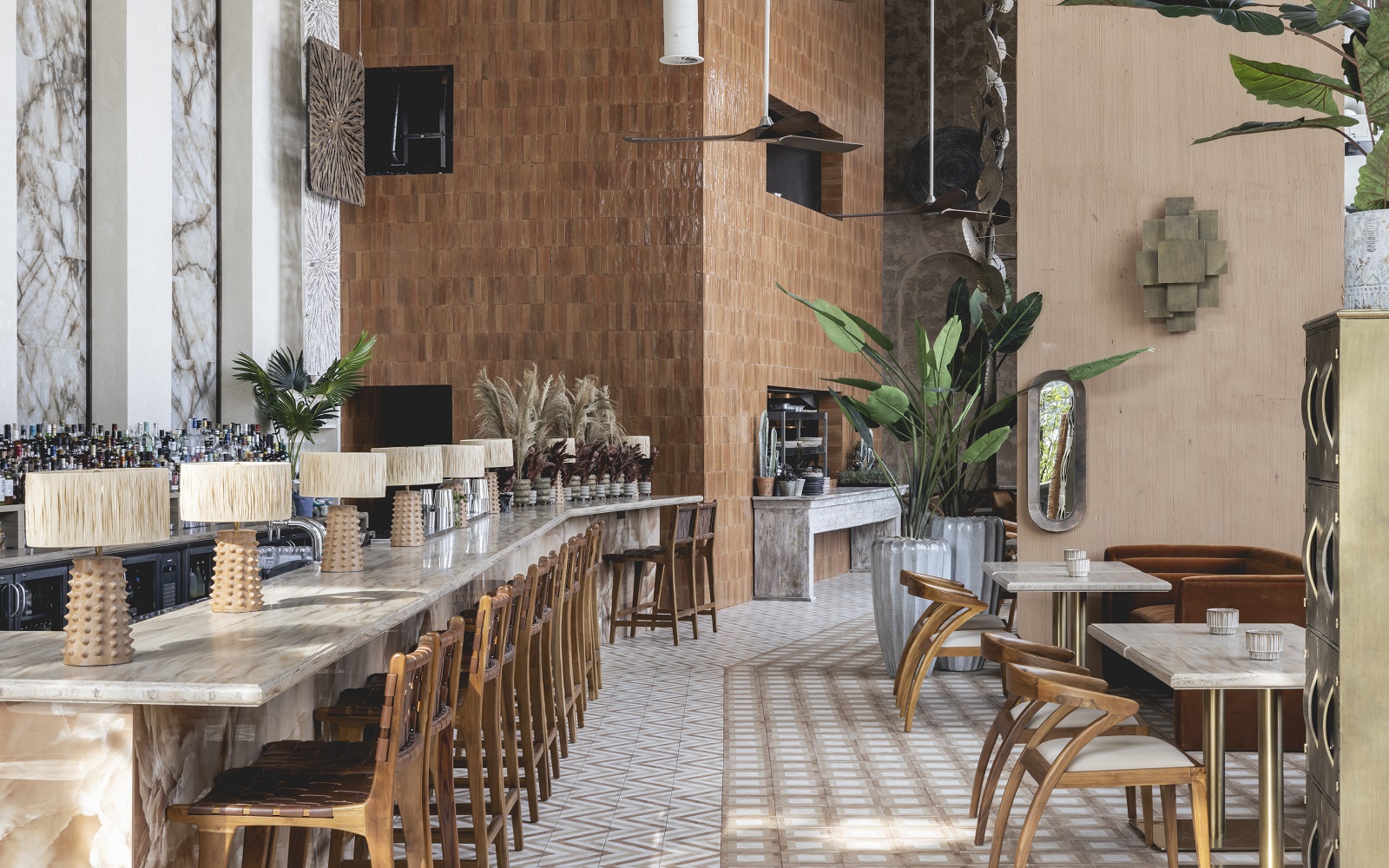
Far from receding into the ether as a post-pandemic trend, biophilic design remains a key element of design in general and in the hospitality industry in particular. What has changed, however, is the language of biophilia. It has deepened, along with our understanding of the psychology of biophilic design. Concurrently, the innovative materials and surfaces that are being explored in response to this have given design schemes an extended meaning.
To define what today’s definition of biophilia looks and feels like in surface design, Hotel Designs, together with Atlas Concorde following the launch of its latest collaboration with HBA, welcomed a handful of interior designers for its latest roundtable, which took place at the start of Clerkenwell Design Week.
On the panel:
What was clear throughout the conversation was that the interlocking elements of biophilic design, sustainability and circularity are all part of the same whole, where the psychology of people and the preservation of the planet are emerging as the primary concerns in design.
Hamish Kilburn: As the biophilic conversation resonates, how much more variety is there now when trying to create a natural, organic look and feel – a biophilic feel – in surface design?
Charlie Cruikshank: There has always been availability to some extent, but the problem has been that there has also been a price associated with introducing natural materials and surfaces into a design.
Wren Loucks: In a case of supply and demand, the shift and increased interest in natural material and biophilic design more broadly, has been mirrored with a shift in price point. This makes sustainable materials more accessible – along with an increased creative focus on exploring materials, which ultimately stimulate wellbeing and drives the biophilic conversation forward.
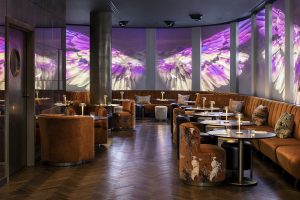
Image credit: LXA
Diana Darmina: In addition, I feel that clients have been part of this shift in terms of what they are asking for as part of a design brief. Designers, in turn, translate these requests to suppliers and the whole supply chain responds and shifts.
Chin Lim: Technology has also been key in allowing us to create products that are both sustainable and practical. This has been one of the most fundamental changes in terms of increasing the offering of what is available in this arena.
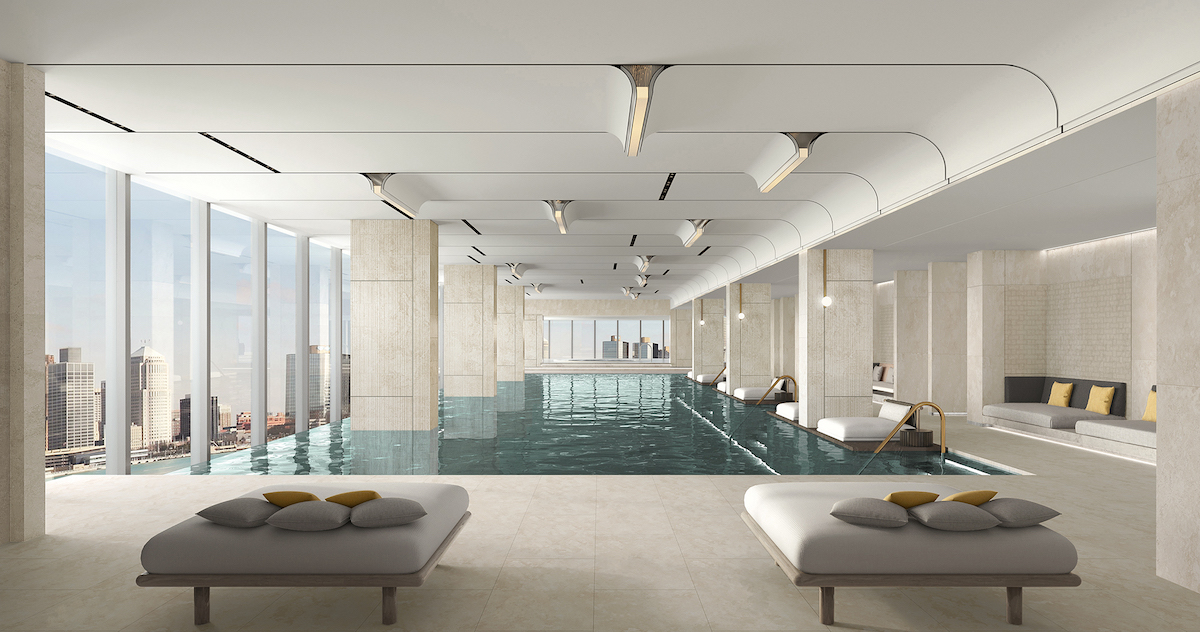
Image credit: Atlas Concorde
HK: How is the pared-back aesthetic that we are seeing in a symbiotic relationship with biophilic design, along with shifting boundaries and the merging of indoor and outdoor spaces, being reflected in the projects you are working on?
Elena Verdera Pastor: Biophilic design was very much part of the thinking process in the Westin London which is reflected in a lot of the detail and materials used in the public areas of the hotel. While Westin is very much a luxury brand, it is not all about metres and metres of marble. In fact, the ceramic offering of marble reproductions have improved so much, that they provide a more sustainable and a more cost effective way of introducing a look that is both luxurious and reflects nature, rather than taking from nature.
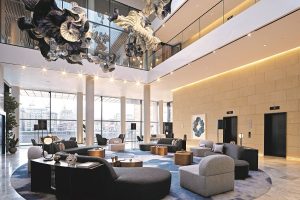
Image credit: Studio Moren
Una Barac: Biophilic design isn’t just about being green – yes, it is about plants and greenery and nature, but there are multiple ways to reflect this. With the SIRO project with Kerzner International, for example, we have focussed on a reduced palette using materials that are honest and avoiding trends that will date. It is about painting and reflecting nature. Part of that process has been to reduce the use of natural stone. Instead, the focus is on sustainably produced tiles that are inspired by nature and reflect nature through a neutral palette – the idea running though SIRO is to calm the senses in a timeless soothing way and reflecting nature is integral to that process.
WL: It’s key to understand what biophilia actually is, as so much about connecting to nature is about experiencing all the senses – nature is inherently restorative and soothing, so biophilic design is about introducing surfaces, textures and colours to facilitate that.
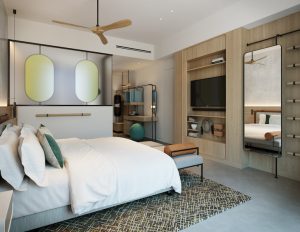
Image credit: Atellior
HK: Creatively, how does the surface design change from urban boutique hotels to, for example, a beachside resort?
CL: Resorts are almost inherently biophilic as they are more geared to merge inside and outside spaces and integrate biophilic design elements in this process, while a hotel in an urban setting is definitively more of a challenge!
Sarah Wakefield: You can be quite subtle with biophilia and use an interplay of patterns and texture from nature through the use of materials and surfaces. This can be used most effectively in elements like furniture where there is most interaction. As humans, our heart rate lowers when immersed in nature, so introducing biophilic notes becomes even more important in an urban environment where there might be less direct reference to draw from. Bringing these materials into the hotel immediately encourages guests to respond intuitively to the surfaces, colours and materials being used.
CC: While not an urban environment, the restaurant inside Gleneagles, Restaurant Andrew Fairlie, had particular challenges. There were no windows and therefore no natural light, which we often see as being key to biophilic design. In this case, we drew inspiration from the Secret Garden on the property. Through different surfaces and patterns, we injected biophilic notes, and as a result create an intimate space that still reflected the surrounding nature despite having no direct access or view of it.
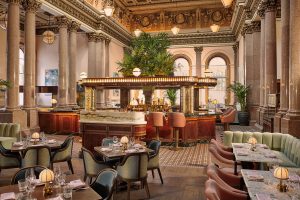
Image credit: Ennismore
HK: Looking at the relationship between biophilic design and sustainability, and with so many factors that need to be considered, what are the current challenges of specifying sustainably?
CL: Increasingly, project funding is being tied into ESG goals, and it is really incumbent on us as designers to guide clients to the right products. This is becoming a lot easier as the sustainability agenda has been on the table for some time now – so most clients are on board and in fact most of our clients, like all of us, are striving for a better and more sustainable future. The process, therefore, of specifying has become easier in this regard.
UB: Ultimately our brief is to design to the budget given to us by the client. At the beginning you start with what you want to aim for, on both a design and an environmental level, but there are so many layers and nuances to this process. It is not about being exclusive or prescriptive on what is or is not sustainable, it is about being genuinely open-minded and interrogating where a material has come from; questioning and researching the entire process of production and delivery along with longevity, which might shift the conversation in an unexpected direction.
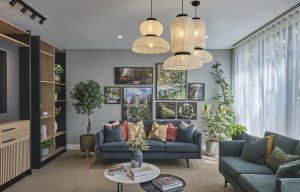
Image credit: Atellior
EVP: As designers, we are constantly trying to really research and develop an understanding of what materials are local to each project – looking beyond our usual suppliers might take a bit more time. However, if we are wanting to add a deeper layer of authenticity to the design, it is important to connect to the local environment and this can also answer concerns around sustainability in a different way. Doing the research at the beginning of a project helps us to communicate this to the client so we can paint a complete picture of production and delivery.
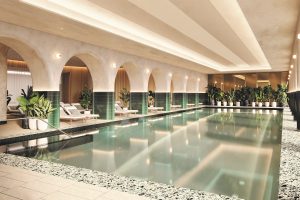
Image credit: Studio Moren
HK: Have questions around issues like sustainability, budget and biophilic design resulted in any unconventional use of material to make a design statement?
SW: We have been working on a project in Hammersmith, where we have been trying to re-use existing material on site to create a new surface material instead of discarding the material. Focussing on the process of reusing and reinventing is both creative and challenging, but it is a process that slowly more suppliers are exploring. It is also interesting how designers use and apply the same material in different ways, or explore different applications for these materials.
CC: In the Hoxton, one solution we have come up with that addresses both budget and surface design is by introducing murals by local artists. which have all co-incidentally been quite organic in form, as well as through the colours and also the type of paint being used in some cases. This was almost an accidental solution that has resulted in a different surface treatment that is also about art and community.
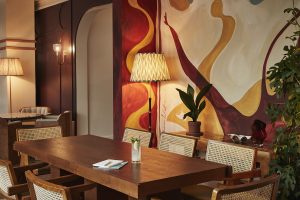
Image credit: Ennismore
DD: I also feel, as designer, that we don’t go often enough to factories to understand the process and discover what isn’t being used – to look at the by-products of production with fresh eyes. We can work with suppliers to add value to waste and find interesting and innovative ways to use these materials.
CL: The innovative use of material can also be socially transformative if you can focus on both local materials and local skills. For the Corinthia Maldives, we worked with local artists to design a bamboo structure, made from materials found on the island, that references the shape of the manta ray found in the waters surrounding the resort. All this adds another layer to the design – sometimes these extra dimensions are not immediately visible but can, importantly, contribute to the overall feeling of the space.
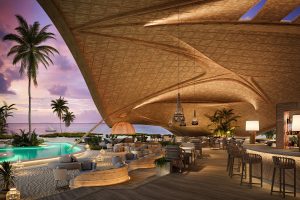
Image credit: HKS
The direction of the conversation around the Atlas Concorde table made it clear that, while it may not always be easy being green, the biophilic path is certainly one that is becoming increasingly interesting and open to interpretation, as designers and suppliers both respond to and challenge preconceived notions of material and surfaces in relation to sustainability.
Atlas Concorde is one of our Recommended Suppliers and regularly features in our Supplier News section of the website. If you are interested in becoming one of our Recommended Suppliers, please email Katy Phillips.
Main image credit: JOLIE






